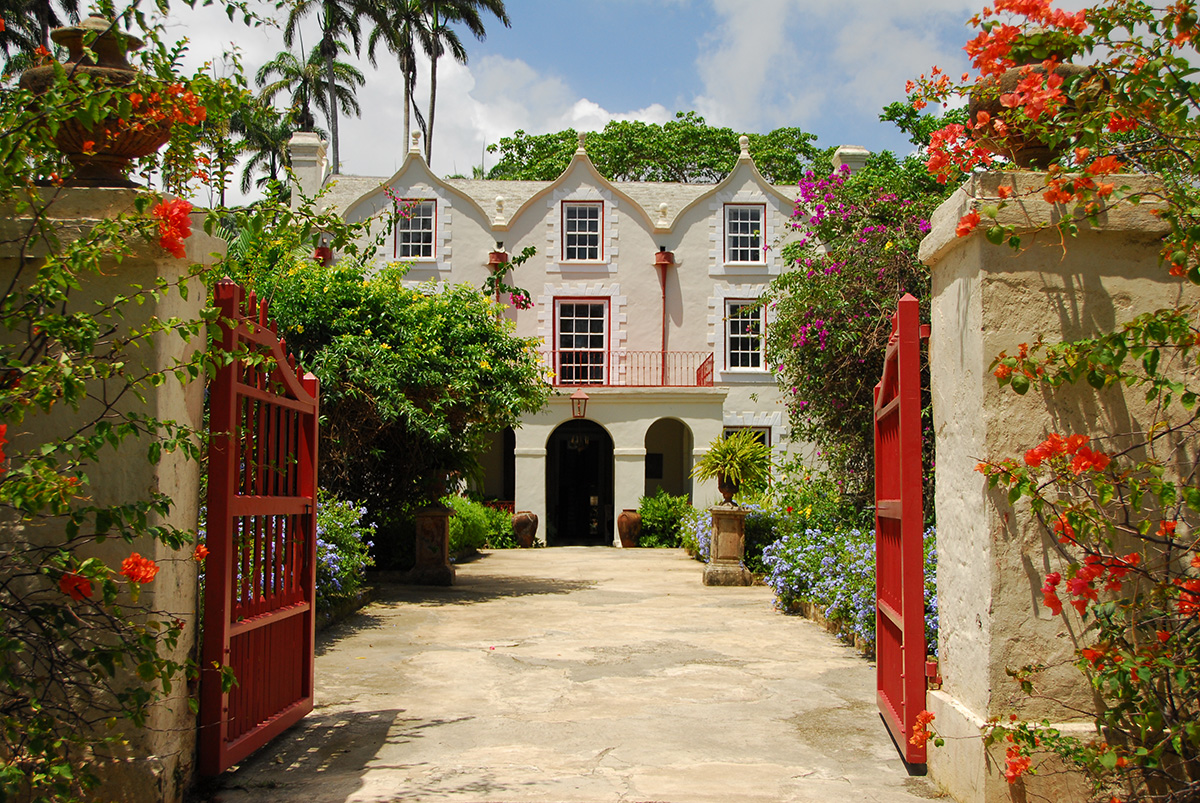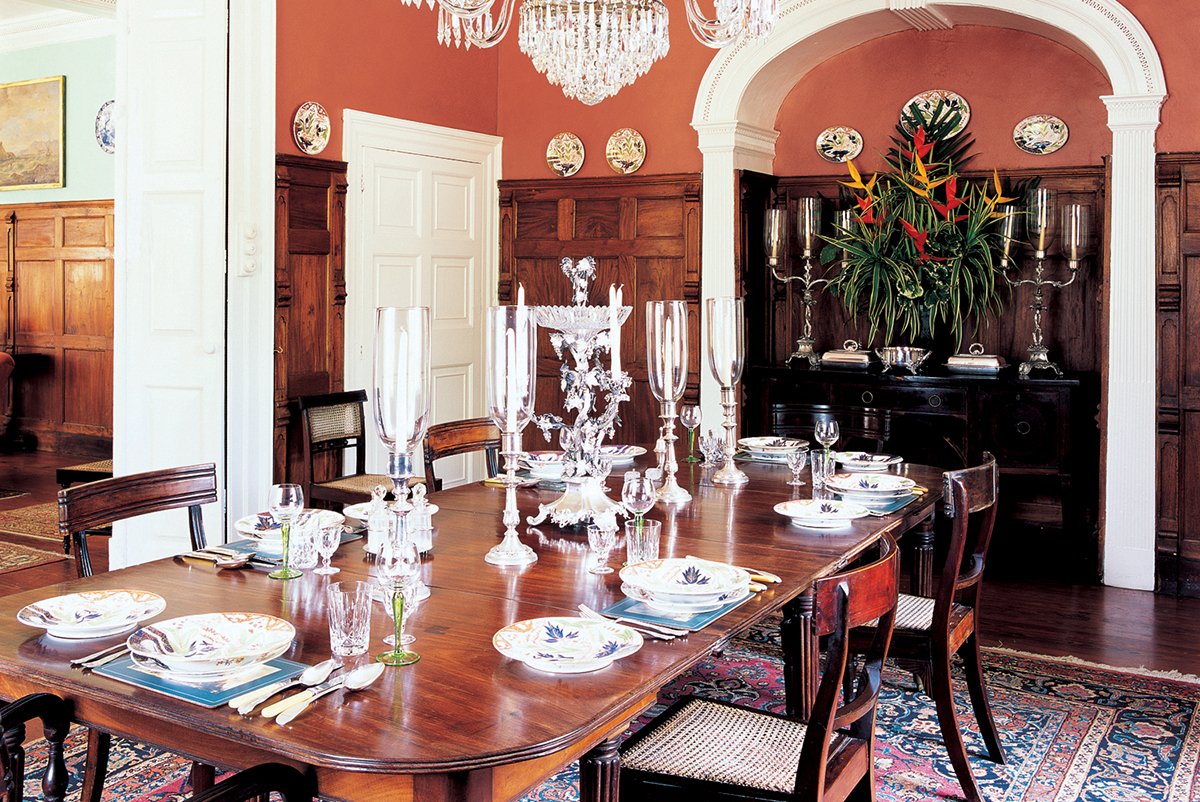The Great House
St. Nicholas Abbey’s great house, built by Benjamin Berringer in 1658, is one of just three Jacobean style mansions remaining in the Western Hemisphere, and one of the finest historic sites in Barbados.

An Architectural Gemstone
Jacobean architecture, named for King James I of England (1603-1625), was a transitional phase in English design; it merged the Tudor and Elizabethan styles with continental Renaissance influences, including Flemish, Dutch and French architecture.
Characterised by elaborate multi-curved gables, Tudor arches, decorative chimneys and casement windows, Jacobean architecture was used on many English homes, schools and colleges built in the 17th century.

Drawing Room
Sir John Gay Alleyne added the Georgian-style triple arcaded portico and sash windows in 1746. The cedar paneling was installed in 1898 to protect the home from dampness, likely taken from trees that fell during the strong hurricane that hit the island that year. The Mahogany door, added in 1910, was also felled on the planation.
The roofing beams, while not visible from the first floor, are original to the home; however the original flooring was replaced with Honduras Pitch Pine, imported from North America, in 1910.

Dining Room
The English Sheraton sideboard c. 1780 is one of the few pieces dating to the original owners of the house. The dining table and chairs, made locally from Barbadian Mahogany in 1850, features a stunning collection of Coalport China.
Circa 1810, the set is hand-painted with an Amari pattern taken from Japanese silk. The Coalport name, derived from the village in Shropshire, England where pottery was produced from 1796-1926, is renowned for quality and expert craftsmanship.

Study
The Burlington Gentleman’s Chair, manufactured in 1935 by Foot & Co. (a manufacturer of hospital equipment during WWI), defined modern relaxation of the time. Described in advertisements as the 'ideal easy chair', it could be transformed into a semi or full length couch with the push of a few buttons. Featuring adjustable tables, a book holder, reading lamp, backrest and footrest, it was a common spot for impromptu napping. The chair could be easily wheeled into another room for the duration of the nap.
There is also a Mahogany Judge's Chair featuring the Coat of Arms of William IV, made in England in the early 1830s.

Hallway
The Chippendale staircase, featuring a different pattern on each flight, replaced the original in 1746. The grandfather clock, built by James Thwaite of London in 1759, has stood on the landing ever since.
Indoor plumbing was installed on the second floor in the 1930s; there is a full bath on the landing, visible from the bottom of the stairwell.

2nd & 3rd Floors
The 2nd and 3rd floors of the home feature seven bedrooms, two with cornerstone fireplaces. The chimneys can be seen from the outside of the house. These floors are not open to visitors in the interest of preservation.










